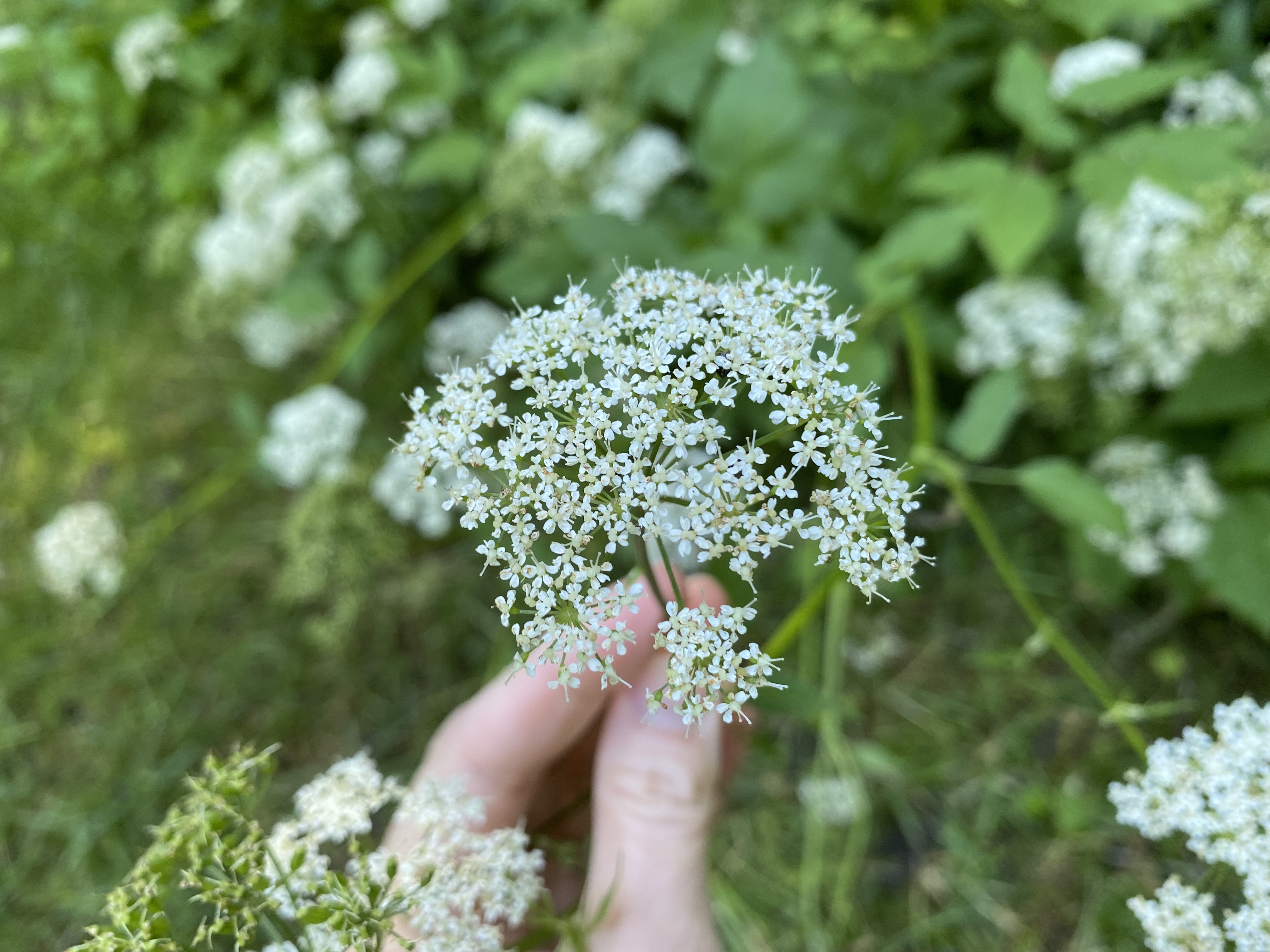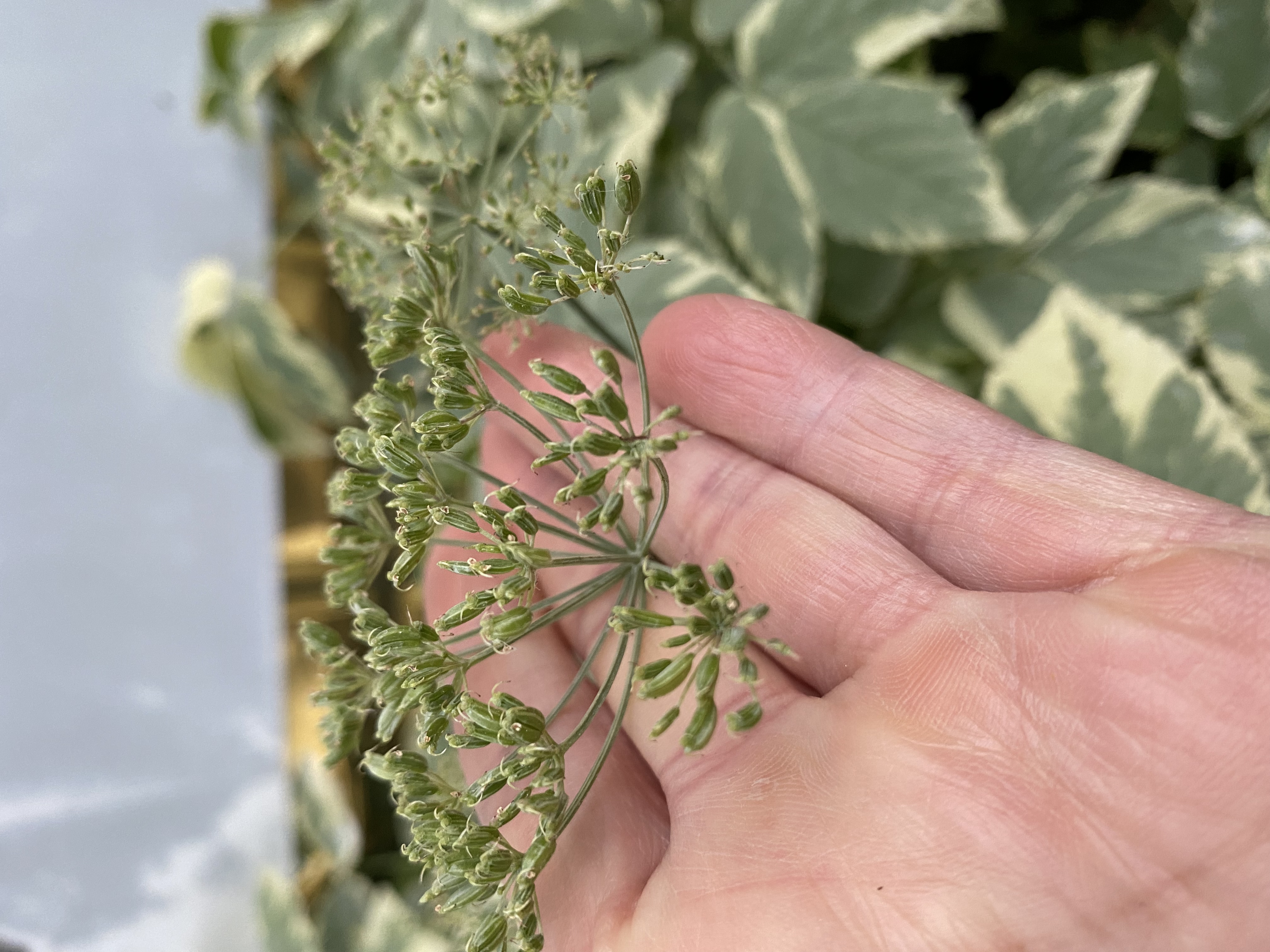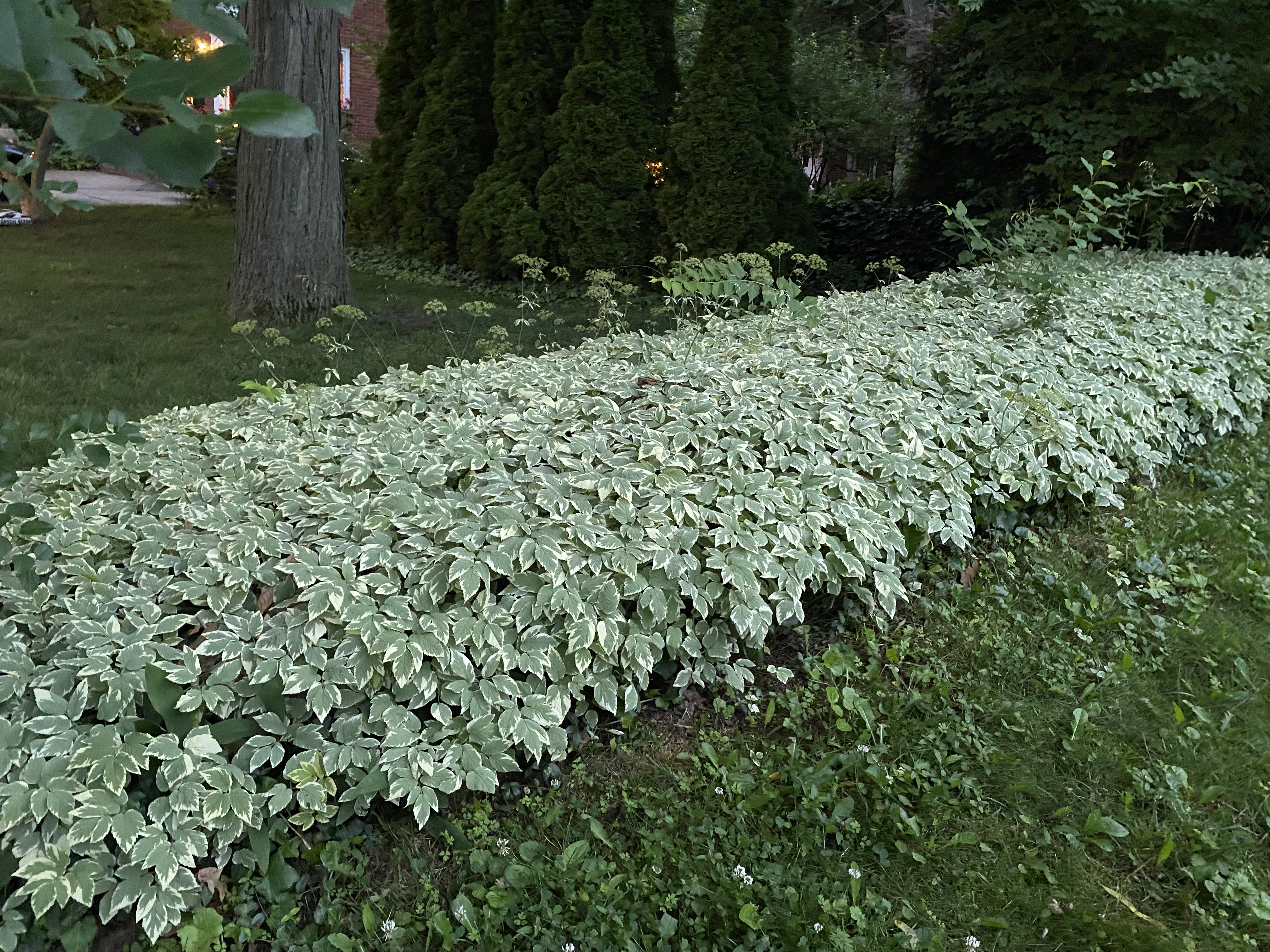
Goutweed - Aegopodium podagraria
Goutweed – Aegopodium podagraria
Apiaceae family
MI Status
Non-native
Life cycle
Perennial
Leaves
Leaves are divided into leaflets and are arranged in groups of 3. Leaflets are toothed and irregularly lobed. Most leaves are basal with long petioles. “Wild” forms are traditionally solid green in color while cultivated forms tend to have variegated leaves that are green to gray with white edging.
Stems
Leaf stems arising from the underground rhizomes may grow up to 12 inches tall. At the base of the leaf stalk is a broad sheath that clasps the stem. Stems are hairless, ridged, and branched.
Flowers and fruit
White petal flowers are produced in flat, or dome shaped clusters called umbels (similar to wild carrot aka Queen Annes’s lace). Each flower contains 5 white petals with notched tips and 5 white stamens. The flowers bloom in mid-summer on a leafy stem. Plants grown in shady areas may not produce flowers. The fruit is oval, ribbed, and 1/6 inch long. When the fruit matures it will split into 2 seeds.
Reproduction
Goutweed does produce seeds; however, it primarily spreads by aggressive underground rhizomes. This plant is traditionally planted as a groundcover but can escape barriers and eventually force out native plants.









 Print
Print Email
Email




